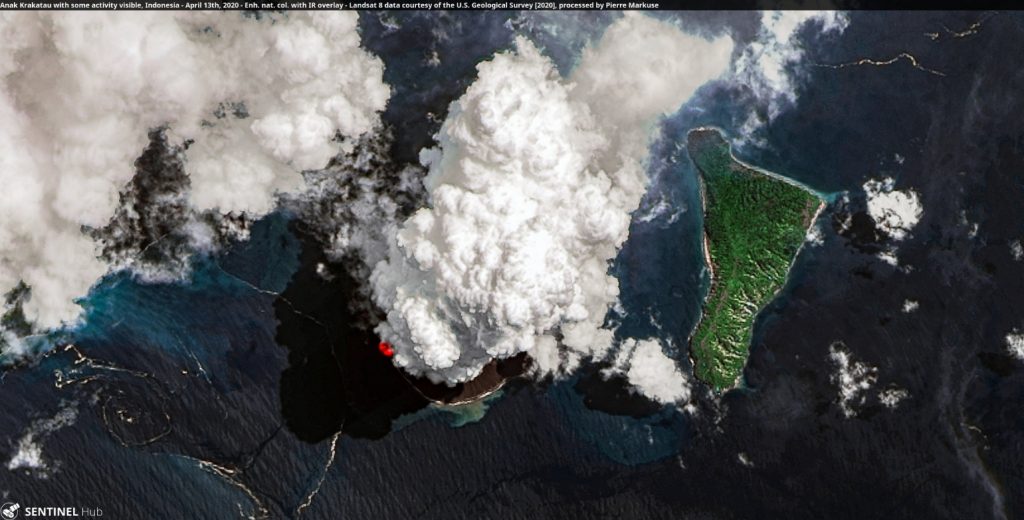
Another strong eruption occurred at Indonesia’s Anak Krakatau volcano on April 13, 2020.
This new explosion took place only three days after a powerful magmatic eruption sent a plume of ash and gas up to 14.3 km (47 000 feet) in the air on April 10, 2020.
Tuesday’s latest roar was at around 13:54 UTC (20:54 local time), had a maximum amplitude of 40 mm and lasted 54 seconds.
Meanwhile, the active volcano in West Sumatra is emitting gas and steam and shows an almost constant glow at night.
The Aviation Alert remains Orange.
Anak Krakatau History
Anak Krakatau or Child of Krakatau emerged in 1927 from the caldera that formed after massive VEI 6 Krakatau eruption of 1883 – one of the biggest in recorded history.
The eruption started on May 20 and lasted at least to October 21, causing more than 36 000 fatalities, most as a result of devastating tsunamis that swept the adjacent coastlines of Sumatra and Java.
The activity intensified as the volcano entered its paroxysmal phase around late August, and then by August 26, a black cloud of ash was seen as high as 27 km (88 000 feet). Four big explosions followed on August 27.
According to the GVP, pyroclastic surges traveled 40 km (25 miles) across the Sunda Strait and reached the Sumatra coast. The caldera collapse during the catastrophic 1883 eruption destroyed Danan and Perbuwatan and left only a remnant of Rakata.
A year following the eruption, the average summer temperatures in the Northern Hemisphere dropped by 0.4 °C (0.72 °F).
The eruption injected an unusually large amount of sulfur dioxide (SO2) gas high into the stratosphere, which was subsequently transported by high-level winds all over the planet.
This led to a global increase in sulfuric acid (H2SO4) concentration in high-level cirrus clouds. The resulting increase in cloud reflectivity (or albedo) reflected more incoming light from the Sun than usual and cooled the entire planet until the sulfur fell to the ground as acid precipitation.
Skies were darkened across the world for years after the explosion, producing spectacular sunsets for months. The Moon reportedly appeared green and blue at times.
After a quiescence of less than a half-century, the post-collapse cone of Anak Krakatau was constructed within the 1883 caldera at a point between the former cones of Danan and Perbuwatan. Frequent eruptions were reported at the volcano since 1927 (VEI 1 to 3).
Do you think we are getting close to another paroxysmal eruptive phase of the Anak Krakatau?
More volcanic eruption news on Strange Sounds and Steve Quayle. [Volcano Discovery, Earth Observatory, Volcano SI, Wikipedia]











